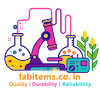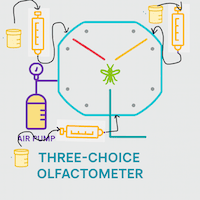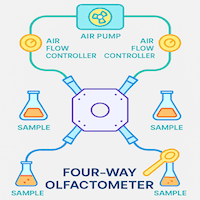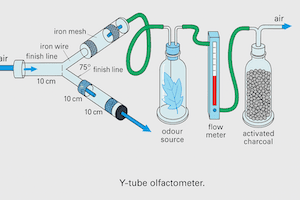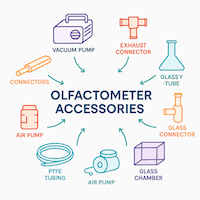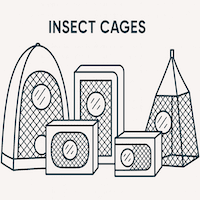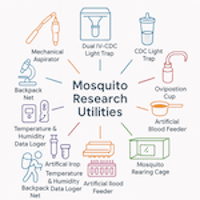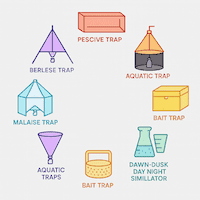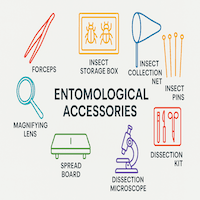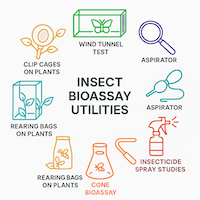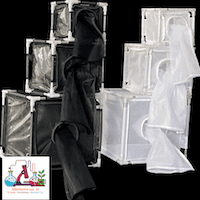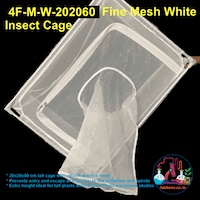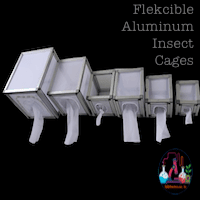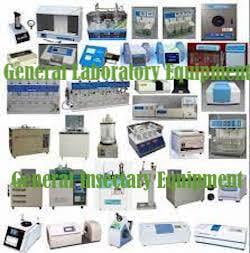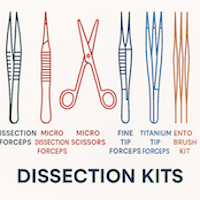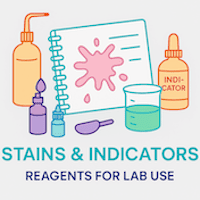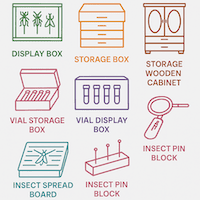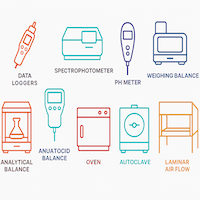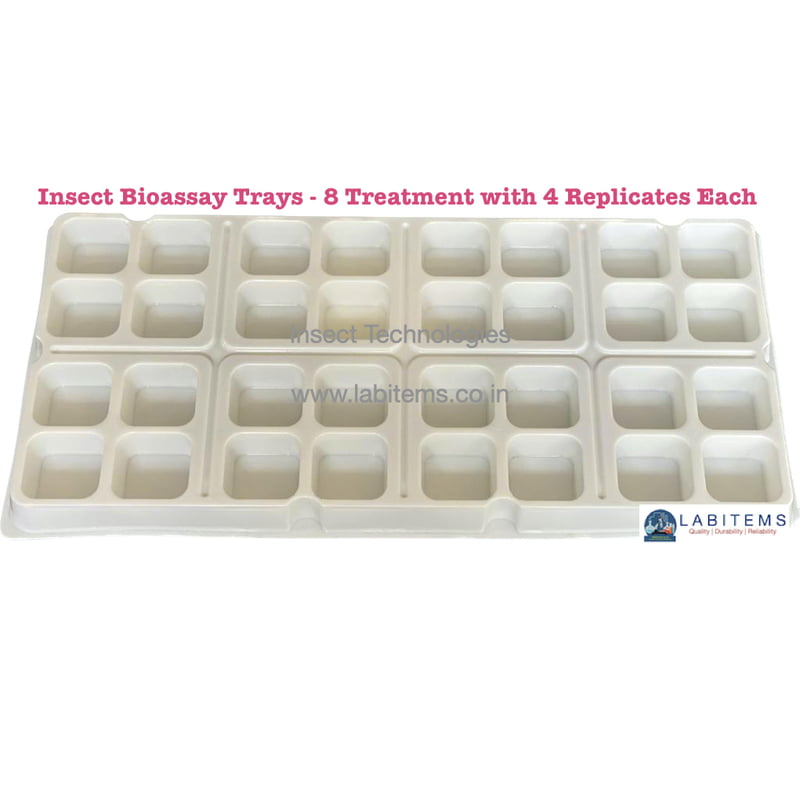
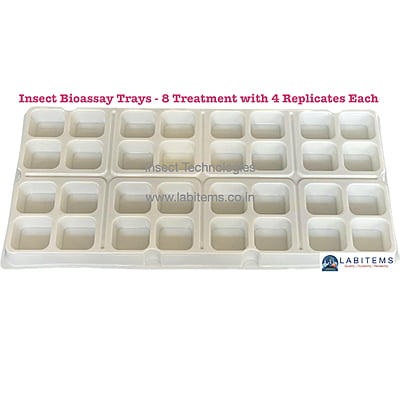



Multi well insect bioassay trays 32 wells-only tray
entoWIZ Multi-well insect bioassay trays, also known as multi-well plates or assay plates, are laboratory tools used in insect toxicology studies to assess the effectiveness of insecticides or other insect control agents. These trays consist of a flat plastic with multiple small wells or compartments arranged in a grid pattern. The tray is divided into eight compartments and each compartment has four wells. In total, the entoWIZ bioassay tray has 32 wells (8 treatments, 4 replicates). This is only the tray and the stickers needed to be purchased separately.
Customize
LABITEMS Multi-well insect bioassay trays, also known as multi-well plates or assay plates, are laboratory tools used in insect toxicology studies to assess the effectiveness of insecticides or other insect control agents. These trays consist of a flat plastic with multiple small wells or compartments arranged in a grid pattern. The tray is divided into eight compartments and each compartment has four wells. In total, the LABITEMS bioassay tray has 32 wells (8 treatments, 4 replicates)
Here are some key features and uses of multi-well insect bioassay trays:
Wells: The trays have multiple wells, 32 wells (8 column x 4 rows). The wells are typically in square shaped. Each well can accommodate a specific number of insects, depending on the study requirements.
Individual compartments: The main purpose of the wells is to create the individual compartments for conducting separate bioassays simultaneously. This allows researchers to test different insecticides or treatments on separate groups of insects or different insect species in a single experiment.
Control and treatment groups: Multi-well trays enable the creation of control groups where insects are not exposed to any insecticides or treatments, providing a baseline for comparison. The remaining wells are used for the treatment groups, where insects are exposed to varying concentrations or formulations of insecticides or other experimental treatments.
Observations and measurements: Researchers can easily observe and record the effects of insecticides or treatments on the insects in each well. This includes monitoring mortality rates, behavioral changes, feeding patterns, reproductive effects, or any other relevant observations. Measurements such as insect body weight, growth rates, or physiological parameters can also be collected if required.
Replicates and statistical analysis: Multi-well trays allow for replication of experiments by repeating the same treatment combinations in different wells. This replication is crucial for generating statistically meaningful data and drawing reliable conclusions about the efficacy of insecticides or treatments.
Efficiency and space-saving: By accommodating multiple bioassays in a single tray, multi-well plates save time and resources, as they reduce the need for individual containers and simplify experimental setup and handling. They also save laboratory space by condensing multiple experiments into a compact format.
Overall, multi-well insect bioassay trays provide a standardised and efficient platform for conducting insect toxicology studies. They facilitate the evaluation of insecticide efficacy, dosage response, insect resistance, or other aspects of insect control research, contributing to the development of effective pest management strategies.
The video is representational purpose so the tray only will come with this order. For stickers or tray with stickers you can search the website.
.
